Music History Resources
Use these resources to explore the rich history of western classical music
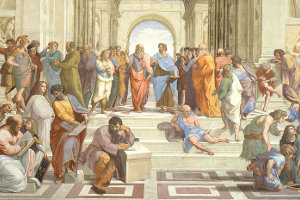
The images on this page are artworks from Wikimedia Commons. Click on each image to go to the original Wikimedia page for more information and higher resolution pictures. Thank you Wikimedia Commons!

Ancient times
- Musical characteristics:
- Few surviving examples of notation, early instruments, use of modes
- Suggested Listening:
- The Epitaph of Seikilos (1st century B.C.)
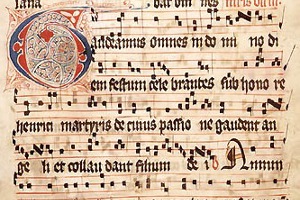
The Medieval Period (400-1400)
- Main composers:
- Mainly anonymous, but also Hildegard of Bingen, Machaut, Landini
- Musical characteristics:
- Use of modes, early instruments, mostly monophonic texture, church music, Gregorian chant
- Suggested Listening:
- Any selections of Gregorian Chant
- Hildegard of Bingen: O ignis spiritus
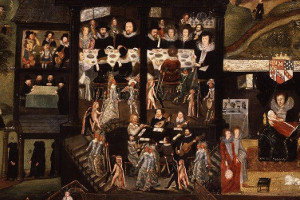
The Renaissance (1400-1600)
- Main composers:
- Josquin des Prez, Palestrina, Dufay
- Musical characteristics:
- Mainly vocal music, some instrumental; use of free polyphony; moving gradually from modes to major and minor scales; use of early instruments, court and church music
- Suggested Listening:
- Palestrina: Super Flumina Babylonis
- Ockeghem: Intermerata Dei
- Dufay: Alma redemptoris mater
- Josquin des Prez: Deploration sur la mort d'Ockeghem
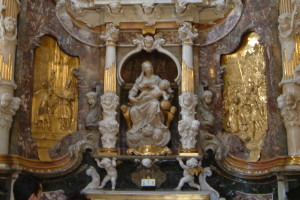
The Baroque Period (1600-1750)
- Main composers:
- Bach, Handel, Vivaldi, Telemann, Purcell, Scarlatti
- Musical characteristics:
- Music is polyphonic, now with rules (counterpoint); ornamentation and complexity valued; use of major and minor keys; more modern instruments; terraced dynamics; motivic development; music written for specific instruments
- Suggested Listening:
- Bach: Brandenburg Concerto No. 4 in G Major, BWV 1049, III: Presto
- Handel: “Hallelujah Chorus” from Messiah
- Vivaldi: “Spring” from The Four Seasons
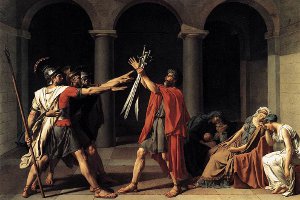
The Classical Period (1750-1820)
- Main composers:
- Haydn, Mozart, Beethoven
- Musical characteristics:
- The Age of Reason, Enlightenment, elegant simplicity, balance, order, a desire for accessibility; homophonic texture; interest in structure; simple harmony; the rise of the concert tradition
- Suggested Listening:
- Mozart: Clarinet Concerto
- Mozart: Piano Sonata in C Major, K 545
- Haydn: The Emperor String Quartet
- Beethoven: Symphony No. 1
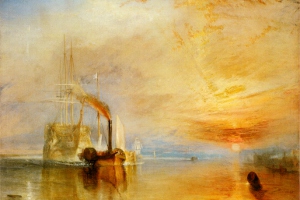
The Romantic Period (1820-1880)
- Main composers:
- Schubert, Schumann, Chopin, Liszt, Mendelssohn, Brahms, Tchaikovsky
- Musical characteristics:
- Passion, sentiment, expression of emotion, rich complex harmony, extended chords, more brass and percussion in the orchestra, expression more important than form
- Suggested Listening:
- Liszt: Piano Concerto No. 1
- Chopin: Nocturne in E flat Major Op. 9 No. 2
- Schubert: Gretchen at the Spinning Wheel
- Tchaikovsky: “Waltz of the Flowers” from The Nutcracker Suite
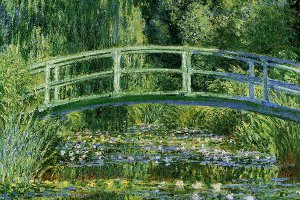
Impressionism (1880-1920)
- Main composers:
- Puccini, Mahler, Ravel, Debussy, Rakhmaninov
- Musical characteristics:
- Experimentation, pushing the boundaries in every direction, rich experimental harmony, an interest in tone colour and orchestral effects, experiments in genre and orchestration
- Suggested Listening:
- Ravel: Bolero
- Debussy: Clair de Lune
- Rakhmaninov: Piano Concerto No. 2
- Puccini: “O Mio Babbino Caro” from Gianni Schicchi

The Twentieth Century and onward
- Main composers:
- Schoenberg, Bartok, Stravinsky
- Musical characteristics:
- Move towards atonality; innovation valued; complex rhythms including syncopation, electric instruments, extended tonality, many different styles including serialism and minimalism
- Suggested Listening:
- Schoenberg: Violin Concerto
- Bartok: Concerto for Orchestra
- Stravinsky: The Rite of Spring
- Glass: “Closing” from Glassworks

